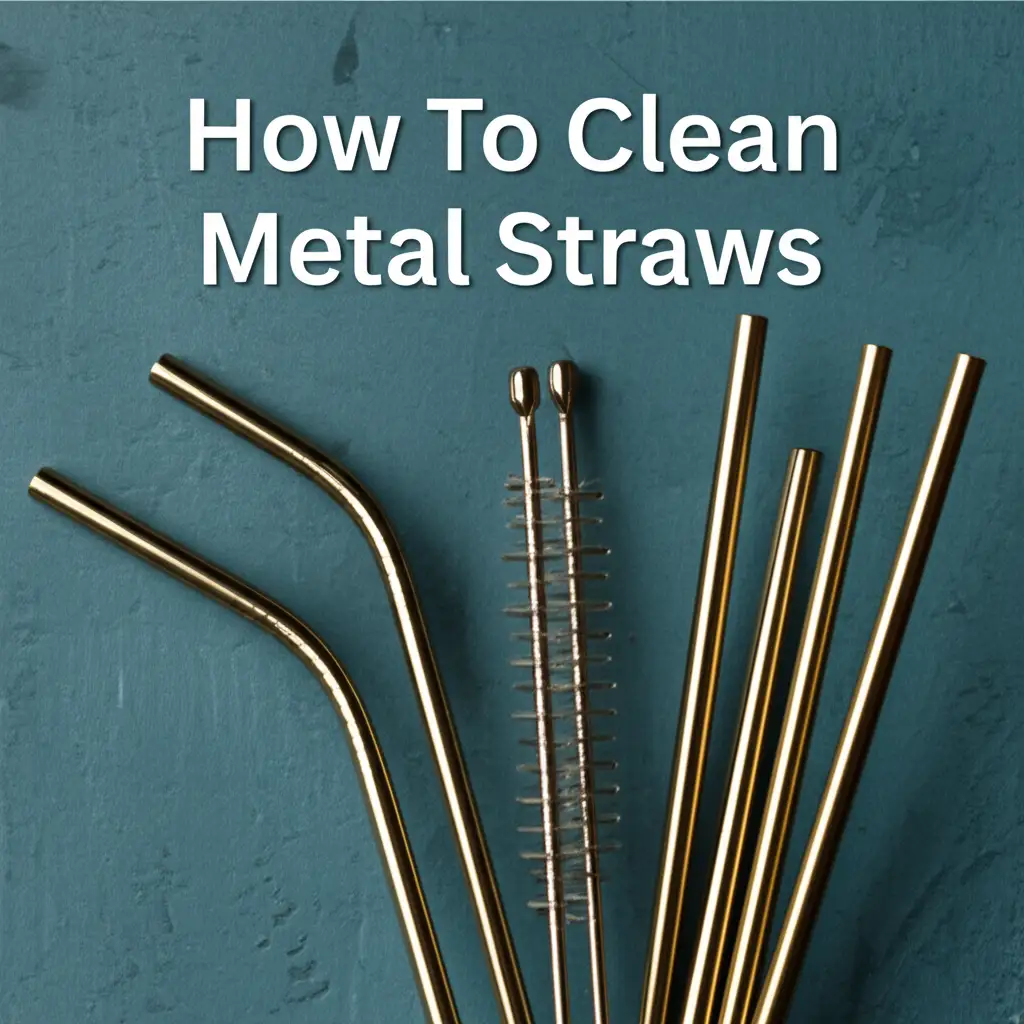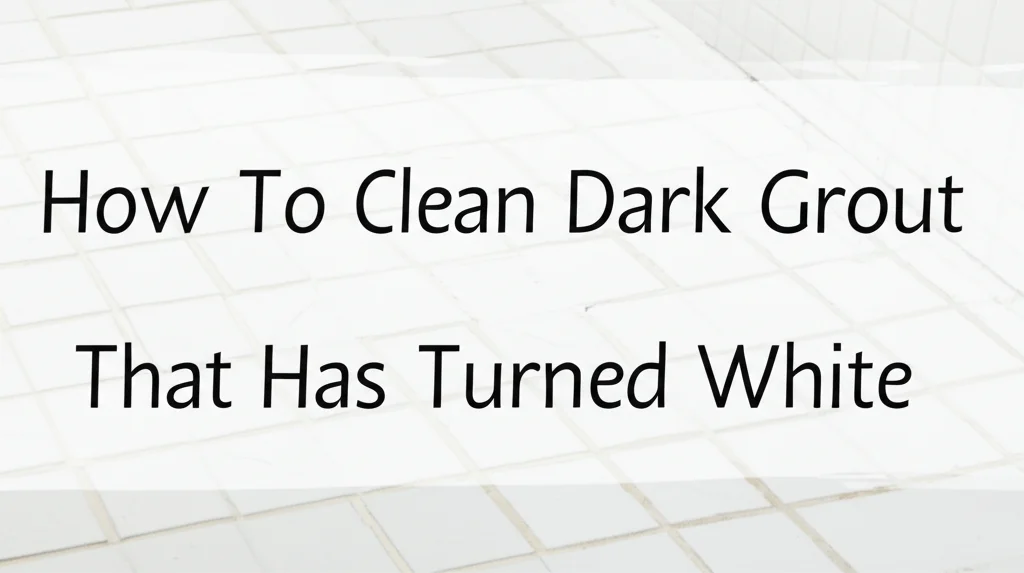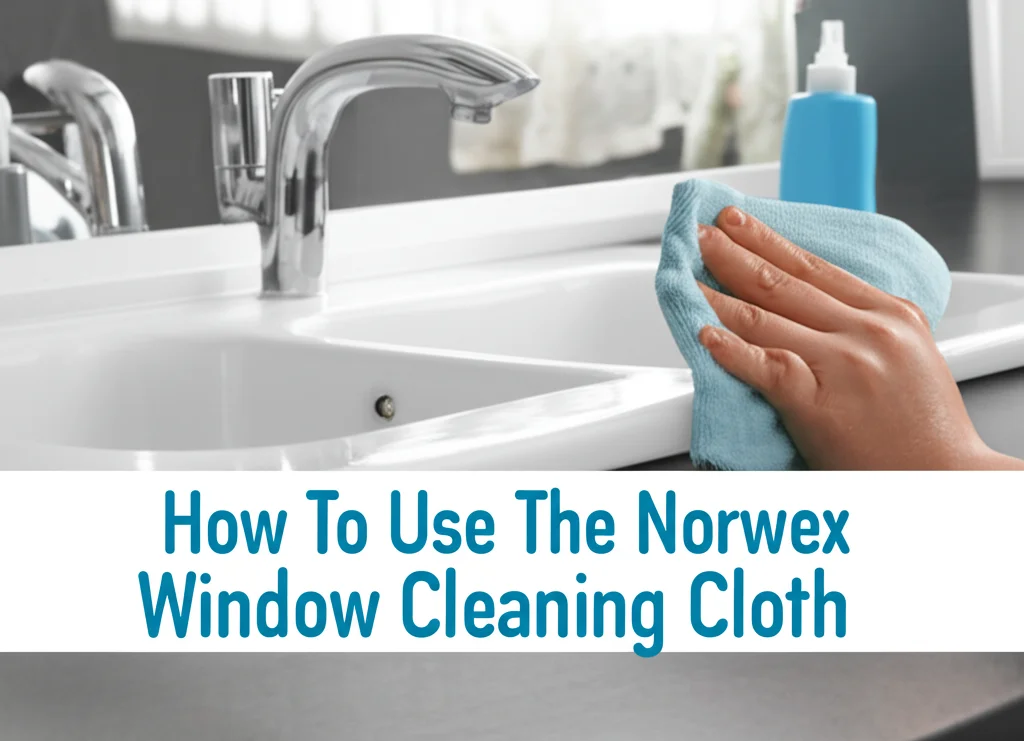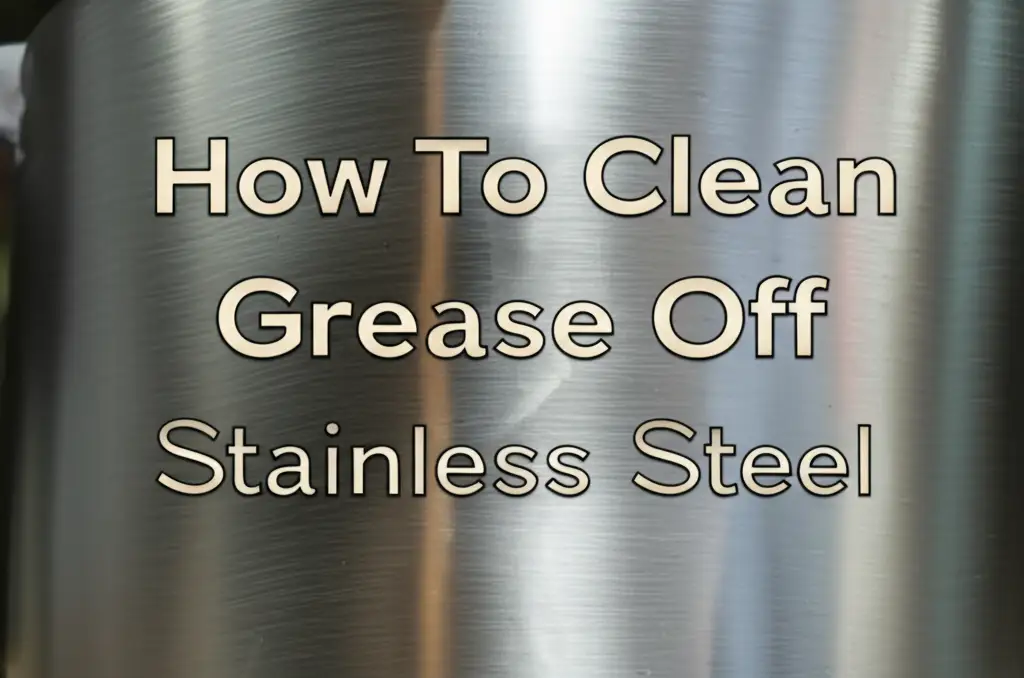· Cleaning Tips · 18 min read
How To Clean Shower Head With Vinegar
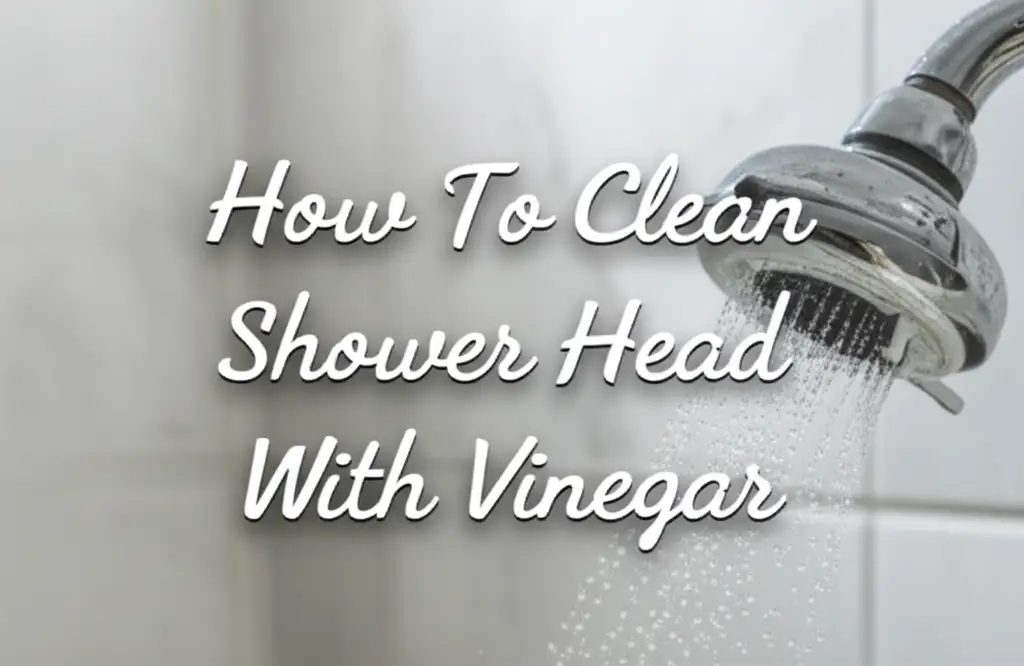
Clean Your Shower Head with Vinegar: A Simple Guide
Has your morning shower lost its sparkle? Is the water flow weak, or do streams spray in odd directions? Chances are, your shower head suffers from hard water buildup. Mineral deposits, primarily lime scale and calcium, clog tiny nozzles over time. This makes your shower less enjoyable and wastes water.
I know the frustration of a lackluster shower. The good news is you do not need harsh chemicals or expensive tools. You can easily clean your shower head with vinegar, a natural and effective cleaner. Vinegar dissolves these stubborn mineral deposits, restoring your shower head to its original glory. This article explains how to clean your shower head using simple vinegar methods. We will cover submerged cleaning, scrubbing, and regular maintenance. You will learn how to bring back strong, refreshing water flow to your bathroom.
Takeaway
You can clean your shower head with vinegar easily. This natural method removes hard water buildup.
- Use white vinegar to dissolve mineral deposits.
- Soak the shower head for several hours or overnight.
- Scrub away loosened debris.
- Rinse thoroughly for improved water flow.
Cleaning your shower head with vinegar involves soaking it in white vinegar for several hours, then scrubbing away loosened mineral deposits, and finally rinsing it well. This process effectively removes hard water buildup and restores water flow, providing a more satisfying shower experience.
Understanding Hard Water Buildup on Shower Heads
Many homes have hard water. Hard water contains high levels of dissolved minerals. These minerals include calcium and magnesium. When water dries, these minerals remain behind. They form stubborn deposits. This process happens frequently on shower heads.
Shower heads often show white, chalky residue. This residue is lime scale. Lime scale forms from calcium carbonate. It builds up inside and outside the shower head nozzles. This buildup causes problems. Water flow becomes restricted. Spray patterns become erratic. Some nozzles may stop working completely. I have seen this happen in my own bathroom. A clogged shower head reduces water pressure. It also makes your shower less effective. Regular cleaning prevents these issues. Vinegar is a good solution for this problem. It is acidic. This acidity helps dissolve mineral deposits.
Over time, mineral deposits can also trap soap scum and other grime. This creates a breeding ground for bacteria and mold. A dirty shower head is not just an annoyance. It can affect your hygiene. Cleaning a shower head regularly improves water quality. It also extends the life of the fixture. You do not want these minerals to ruin your shower. Take action to clean it.
Understanding the cause helps you treat it. Hard water is the culprit. Vinegar is the hero. It breaks down these mineral bonds. This makes cleaning simple and effective. You do not need to buy specialized products. The solution sits in your pantry.
Why Vinegar is the Best Choice for Cleaning Your Shower Head
Vinegar is a top choice for cleaning shower heads. It is effective, natural, and safe. White distilled vinegar is especially good. It contains acetic acid. Acetic acid is a powerful descaling agent. It reacts with mineral deposits like calcium and lime scale. This reaction breaks them down.
Chemical cleaners can be harsh. They may contain strong fumes. They can also damage surfaces. Vinegar offers a gentle alternative. It does not harm chrome or plastic finishes. It is safe for most plumbing materials. This makes it a smart choice for home cleaning. I prefer using natural products whenever possible. It keeps my home free of unnecessary chemicals.
Vinegar is also very affordable. You can buy a large bottle for a low price. It is readily available in any grocery store. This makes it a budget-friendly cleaning option. You do not need special tools or expensive solutions. Just a simple bottle of vinegar.
Another benefit is its non-toxic nature. Vinegar is food-grade. It does not pose a health risk if you accidentally inhale its fumes. It does not leave behind harmful residues. This is important, especially in a shower where water touches your skin. You can clean with peace of mind. For other household cleaning tasks that benefit from vinegar, consider how to clean various appliances with natural solutions. For example, learning how to clean dishwasher with vinegar and baking soda shows its versatility in tackling tough grime and odors. Similarly, exploring how to clean washing machine with baking soda and vinegar highlights its effectiveness in removing soap residue and maintaining appliance longevity.
Vinegar also acts as a disinfectant. It helps kill some bacteria and mold spores. This provides an added layer of cleanliness. It makes your shower head fresh and hygienic. This multifaceted capability makes vinegar an ideal cleaning agent for your shower head.
Preparing Your Shower Head for Vinegar Treatment
Preparation is key for effective cleaning. First, gather your supplies. You will need white distilled vinegar. A plastic bag, rubber band, and an old toothbrush are also helpful. A cloth or sponge finishes the list. Having everything ready saves time.
Check if your shower head is removable. Many modern shower heads easily unscrew from the arm. If it is removable, this is the easiest method. You can fully submerge it. If it is not removable, do not worry. A plastic bag method works well. Most shower heads attach with a threaded connection. You can usually twist them counter-clockwise.
Before you begin, turn off the water. This prevents accidental sprays. It also helps you work safely. If you remove the shower head, place a towel in the shower base. This catches any drips. It also prevents small parts from falling down the drain. You do not want to lose any gaskets or screens. These parts are important for proper function.
For a non-removable shower head, clear the area. Make sure nothing obstructs the shower head. Remove any shower caddies or soap dishes nearby. You need space to attach the bag. This step ensures the vinegar solution surrounds the entire shower head.
A quick pre-rinse can help. Run hot water through the shower head for a minute. This loosens some superficial debris. It also warms the metal. Warming can make the vinegar more effective. It prepares the mineral deposits for dissolution. Now your shower head is ready for its vinegar bath.
The Bag Method: Cleaning a Non-Removable Shower Head
The bag method is excellent for shower heads you cannot remove. It is simple and effective. You need a sturdy plastic bag. A Ziploc bag or a grocery bag works. You also need white distilled vinegar and a rubber band or string. This method allows the shower head to soak.
First, pour enough white vinegar into the bag to submerge the shower head. You want the vinegar to cover all the nozzles. You can use it straight or dilute it slightly. For heavy buildup, use full-strength vinegar. Hold the bag up to the shower head. Position it so the shower head sits inside the bag. All the spray holes must be underwater.
Next, secure the bag around the shower arm. Use a strong rubber band or string. Cinch it tightly. This prevents the vinegar from leaking out. Ensure the bag stays in place. You want a good seal. The shower head must remain fully immersed. Check for any gaps. Adjust the band as needed.
Allow the shower head to soak. For light buildup, a few hours may suffice. For heavy mineral deposits, let it soak overnight. I often leave mine for 6-8 hours. The longer it soaks, the better the vinegar works. It needs time to dissolve the minerals. While this method targets the shower head, related areas like shower glass can also accumulate similar mineral buildup. For example, learning how to clean hard water stains on shower glass can complement your cleaning efforts.
After soaking, carefully remove the bag. The vinegar will look cloudy. This means it did its job. You will see bits of mineral deposits in the bag. Dispose of the vinegar properly. Then, scrub the shower head. Use an old toothbrush or a small brush. Get into all the nozzles. Loosened minerals should come off easily. Rinse the shower head well. Turn on the water. Let it run for a few minutes. This flushes out any remaining debris. Enjoy your improved water flow.
Submerging and Soaking: Cleaning a Removable Shower Head
Cleaning a removable shower head is even easier. You can fully submerge it. This ensures all parts get thorough treatment. You will need a bucket or a bowl. Choose one large enough to fit the shower head. Again, white distilled vinegar is your main cleaning agent.
First, carefully unscrew the shower head from the shower arm. Turn it counter-clockwise. You may need a wrench for a tight connection. Be gentle to avoid scratching the finish. Remember to place a towel on the shower floor. This catches any small parts. You might find a rubber washer or filter screen. Keep these safe.
Place the shower head into your chosen container. Pour white distilled vinegar over it. Make sure the shower head is completely covered. If the buildup is extreme, you can use a 50/50 mix of vinegar and water. For most cases, straight vinegar works best. The acidity goes to work immediately.
Let the shower head soak for several hours. Overnight soaking is ideal for heavy mineral deposits. The longer it soaks, the more dissolved the minerals become. I like to let mine soak while I am out running errands. This gives it ample time. You will notice fizzing as the vinegar reacts with the minerals. This is a sign it is working. The same principles apply to other appliances that collect mineral deposits. Knowing how to clean hard water from shower head is similar to understanding how to clean hot water heater with vinegar, as both benefit from vinegar’s descaling properties.
After soaking, remove the shower head. Discard the used vinegar. Use a small brush, like an old toothbrush or a soft-bristled brush, to scrub any remaining deposits. Pay attention to the nozzles. You can also use a toothpick or pin to poke through any stubborn blockages. Rinse the shower head thoroughly under running water. Reattach it to the shower arm. Turn the water on. Let it run for a few minutes to flush out any internal debris. You will see a significant improvement in water pressure and spray pattern.
Scrubbing and Rinsing: Finishing the Cleaning Process
After soaking, scrubbing and rinsing are crucial steps. They remove all the loosened debris. This ensures your shower head works like new. Do not skip these important final stages. They make all the difference.
First, take your soaked shower head. You will notice that the white, crusty deposits are now soft or gone. Use an old toothbrush or a soft-bristled brush. Gently scrub the entire surface of the shower head. Focus on the nozzles. Work the brush into each hole. This dislodges any remaining mineral flakes. You might see some grime come off. This is a good sign. It means the vinegar worked.
For stubborn clogs in individual nozzles, use a toothpick or a pin. Carefully poke into each tiny hole. This pushes out any hard-to-reach particles. Be gentle to avoid scratching the surface or damaging the nozzle. Make sure the holes are clear. I often use a sewing needle for the smallest holes.
Once you have scrubbed everything, it is time to rinse. Rinse the shower head under clean, running water. Hold it under the faucet. Let the water flow through the nozzles. This washes away all the loosened debris. Shake the shower head to dislodge any internal particles. You want it completely clean.
Finally, reattach the shower head if you removed it. Screw it back onto the shower arm. Make sure it is hand-tight. Do not overtighten. Turn on the shower water. Let it run on hot for a few minutes. This flushes out any internal vinegar residue and remaining loose debris. You will instantly notice the difference. The water stream will be strong and even. Your shower experience will improve dramatically. This finishing touch reveals the full power of the vinegar treatment.
Maintaining a Clean Shower Head: Tips for Long-Term Care
Cleaning your shower head with vinegar is effective. Regular maintenance keeps it in top condition. You can prevent heavy buildup from returning. This means fewer deep cleaning sessions. I find this approach saves me time in the long run.
After each shower, wipe down the shower head. Use a towel or a soft cloth. This removes surface water. It helps prevent new mineral deposits from forming. Less water means less residue. This simple habit makes a big difference. It is an easy way to keep your shower head looking good.
Consider a quick mini-soak every month. Fill a plastic bag with vinegar. Secure it around the shower head. Let it sit for 30 minutes to an hour. This short soak prevents scale buildup. It keeps the nozzles clear. This is especially helpful if you live in a hard water area. A little maintenance goes a long way. This is similar to routine cleaning in other areas of your home. For instance, understanding how to clean soap scum from glass shower doors complements good shower head habits, ensuring your whole shower stays sparkling.
You can also use a mixture of vinegar and baking soda for occasional deeper cleaning. This combination creates a fizzy reaction. It helps lift tougher stains. Mix equal parts baking soda and vinegar. Apply the paste to the shower head. Let it sit for a bit. Then scrub and rinse. This method boosts cleaning power. Learning how to clean with vinegar and baking soda can open up many more cleaning possibilities around your home.
Monitor your water pressure. A decrease in pressure often signals buildup. Do not wait until the flow is completely blocked. Address the issue early. This makes cleaning easier. Prevention is always better than cure. By following these maintenance tips, your shower head will deliver strong, clear sprays for years.
Troubleshooting Common Shower Head Cleaning Issues
Sometimes, cleaning a shower head can present challenges. You might encounter stubborn buildup or unexpected issues. Do not get discouraged. Most problems have simple solutions. I have run into a few myself over the years.
One common issue is extremely heavy mineral buildup. If vinegar alone does not work, try extended soaking times. Let the shower head soak for 12 to 24 hours. For very tough cases, you can gently heat the vinegar. Warm vinegar can be more effective. Be careful not to boil it. Warm vinegar helps speed up the reaction.
Another problem might be a loose or damaged shower head after reassembly. Make sure the rubber washer is in place. This washer creates a seal. If it is missing or damaged, the shower head will leak. You can buy replacement washers at hardware stores. Hand-tighten the shower head firmly but do not overtighten. Overtightening can strip the threads or crack plastic.
Sometimes, mineral deposits might be inside the shower arm. This is less common but possible. If the shower head is clean but flow remains poor, the issue might be deeper. You might need a plumber for this. However, most clogs happen at the shower head.
What if the shower head material reacts badly? Most shower heads are chrome, plastic, or brushed nickel. Vinegar is safe for these. Avoid prolonged soaking on brass or bronze finishes. The acid can sometimes cause discoloration on certain metals. Always test a small, inconspicuous area if you are unsure.
If the water pressure is still weak after cleaning, check your water main. Or look for other plumbing issues in your home. The shower head might not be the only problem. But cleaning it with vinegar is always the first step. It often resolves most water flow issues. Stay patient and follow these troubleshooting tips.
When to Consider Replacing Your Shower Head
While cleaning your shower head with vinegar works wonders, there comes a time when replacement is the best option. No cleaning method can fix a truly broken fixture. Recognizing these signs helps you decide. Knowing when to replace can save you future frustration and effort.
One clear sign is visible damage. If you see cracks in the plastic housing, rust on metal parts, or significant corrosion, it is time for a new one. These damages can lead to leaks. They also make cleaning impossible. A damaged shower head also looks unsightly.
Another indicator is persistent low water pressure. Even after thorough vinegar cleaning and scrubbing, if the water flow remains weak, the internal components might be too damaged. The tiny channels inside the shower head can become permanently scaled. They might also have internal parts that fail. These hidden issues cannot be fixed with external cleaning.
Older shower heads also tend to be less efficient. Modern shower heads use less water. They still provide strong pressure. They often have better spray patterns. Upgrading to a new, water-efficient model can save money on water bills. It also gives you a better shower experience. I consider this an investment in my home comfort.
Consider replacement if you have tried multiple deep cleaning sessions without lasting improvement. If the mineral buildup returns quickly, or you find yourself cleaning it every few weeks, it might be a losing battle. The internal design of some older models makes them prone to clogging. A new design might resist buildup better.
Finally, think about aesthetics. If your shower head is old, discolored, or just does not match your bathroom decor anymore, a replacement offers a fresh look. A new shower head can instantly update your bathroom. It is a simple and impactful upgrade. Replacing it becomes a practical decision for function, efficiency, and appearance.
Frequently Asked Questions
Is it safe to leave a shower head in vinegar overnight?
Yes, it is generally safe to leave a shower head soaking in white distilled vinegar overnight. This extended soak allows the acetic acid in the vinegar ample time to dissolve stubborn mineral deposits and lime scale effectively. Ensure the shower head material is compatible with vinegar, especially for brass or bronze finishes. Most common materials like chrome, plastic, and brushed nickel are fine.
What kind of vinegar should I use to clean my shower head?
You should use white distilled vinegar. This type of vinegar has a consistent acidity level, typically 5%, which is strong enough to break down hard water minerals like calcium and lime scale. Avoid using apple cider vinegar or other types, as they may contain sugars or other compounds that are not ideal for cleaning and could leave residues.
How often should I clean my shower head with vinegar?
The frequency depends on your water hardness. In areas with very hard water, you might need to clean your shower head monthly or every few weeks. For softer water areas, cleaning every 2-3 months might suffice. Regular, quick wipe-downs after each shower can also help reduce the need for deep cleaning. Pay attention to water flow; if it diminishes, it is time to clean.
Can vinegar damage my shower head or plumbing?
White distilled vinegar is safe for most standard shower head materials and plumbing. It effectively dissolves mineral buildup without harming chrome, plastic, or brushed nickel finishes. Avoid prolonged contact with unsealed natural stone or cast iron. If you have concerns about specific finishes like brass or bronze, test a small, hidden area first or opt for shorter soaking times.
What if my shower head still has clogs after cleaning with vinegar?
If clogs persist after a vinegar soak, the buildup might be very severe or internal. Try soaking for a longer duration, up to 24 hours. Use a thin tool like a toothpick or sewing needle to poke individual nozzles and dislodge remaining debris. For deeply embedded clogs or internal issues, professional plumbing assistance or replacing the shower head might be necessary.
Can I mix vinegar with other cleaners for my shower head?
No, do not mix vinegar with other cleaning products, especially bleach. Mixing vinegar (an acid) with bleach (a base) creates dangerous chlorine gas, which is toxic. Vinegar is effective on its own for hard water deposits. For enhanced cleaning, you can use baking soda, as it reacts with vinegar to create a fizzy, scrubbing action, but always use these separately from other chemicals.
Conclusion
A well-functioning shower head makes a big difference in your daily routine. Hard water mineral buildup is a common problem. It can turn a refreshing shower into a frustrating drip. Learning how to clean shower head with vinegar provides an easy, natural, and highly effective solution. You do not need harsh chemicals or specialized tools. Just common white vinegar.
We explored simple methods. You can use the bag method for non-removable shower heads. Submerging a removable one works even better. Regular scrubbing and rinsing complete the process. These steps bring back strong water flow. They restore your shower head to its prime condition. Remember to maintain your shower head. Wipe it down daily. Perform quick monthly vinegar soaks. This prevents future buildup. If your shower head shows irreversible damage or fails to improve, consider replacing it for a better experience. Take action today. Bring back the joy of a powerful, clean shower. Your morning routine will thank you.
- vinegar cleaning
- shower head cleaning
- hard water removal
- mineral deposits
- eco-friendly cleaning
- bathroom cleaning
- descaling

